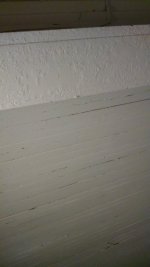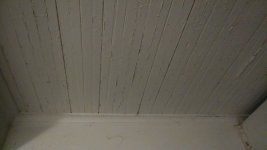So I have an older(1937) house with a little porch that's about 150 sq ft.
The ceiling on the porch is beadboard with a paint on it. The top layer is alligatoring and I would be surprised if the bottom layers were to test negative for lead, although I haven't actually tested it yet.
I'm contemplating what to do about it and considering a couple options:
1) pay painters to scrape and sand, encapsulate with fiberlock, and repaint.
2) Chemical strip back down to wood
3) Remove and replace the beadboard and crown trim
Are there other options I'm considering that I should be thinking about? Those of you who do this for a living, what would you suggest? The house is not in any way historically significant.
I've attached a couple shots of it for detail.
Thanks,
Adam
The ceiling on the porch is beadboard with a paint on it. The top layer is alligatoring and I would be surprised if the bottom layers were to test negative for lead, although I haven't actually tested it yet.
I'm contemplating what to do about it and considering a couple options:
1) pay painters to scrape and sand, encapsulate with fiberlock, and repaint.
2) Chemical strip back down to wood
3) Remove and replace the beadboard and crown trim
Are there other options I'm considering that I should be thinking about? Those of you who do this for a living, what would you suggest? The house is not in any way historically significant.
I've attached a couple shots of it for detail.
Thanks,
Adam


